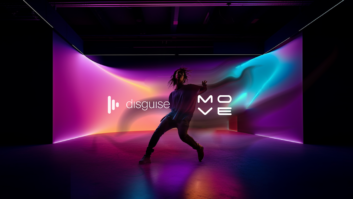In the run-up to IBC, Autodesk has introduced new point releases of its visual effects and editing systems Inferno, Flame, Flint, Fire and Smoke. Rather than emphasise that some of these systems are quite long in the tooth for such a rapidly evolving field as vfx and are well into double figure iterations, Autodesk has simply attached next year’s date to the new versions. Thus the full name for Inferno is now Autodesk Inferno 2007, Flame becomes Autodesk Flame 2007 and so on.
“We are in an era where visual effects are pervasive in film and television, from blockbuster movies to independent productions and TV documentaries,” explained Marc Petit, Autodesk’s Media & Entertainment vice president. “Digital artists face pressure to produce synthetic characters and environments that are increasingly photorealistic, on tighter budgets and deadlines. Larger and decentralised production teams are also creating the need for easier collaboration and more efficient workflows. These challenges are addressed in the latest versions of Autodesk’s visual effects and editing systems, with architecture enhancements for increased performance, as well as more than 70 new features.”
Los Angeles-based Rhythm & Hues Studios has been using Autodesk’s visual effects systems for more than nine years. Beta tester Kevin Tengan, head of 2D systems at the visual effects facility, noted: “Autodesk Flame and Inferno have always exceeded our expectations, and this latest release is no exception. Inferno allowed us to quickly complete nearly 70 shots on ‘The Fast and the Furious: Tokyo Drift’, which would have otherwise been very technically difficult. The speed of Flame 2007 on Linux and its ability to work in both television and film resolutions has also continued to amaze us.”
To address the need for greater connectivity, the new systems offer expanded interoperability and improved data management, including support for the Autodesk Wiretap 2007 application program interface. Wiretap enables remote project management and third-party file exchange by allowing platform-independent access to media and metadata in the Autodesk Stone file system. Digital artists can now take advantage of Infiniband networking with throughput of 400MBps or more. In addition, Autodesk’s editing and finishing systems provide new support for AAF, making it easier to conform projects that come from Avid offline systems, as well as greater support for Apple Final Cut Pro XML. This, says the company, allows artists to spend more time creating effects and less time rebuilding their digital cut. Productivity is improved with new features and enhancements that include: complete project archiving, optimised standard filesystem support to avoid media duplication, background wire transfers and proxy generation, and improved Wire performance.
Autodesk’s editing and visual effects systems also take full advantage of multi-core, 64-bit Linux workstations, providing greater interactivity and speed. And away from the sexy frontline work, Autodesk has also debuted Autodesk Backdraft Conform 2007. Designed to boost facility productivity, this remote assistant utility for data wranglers and assistant editors handles repetitive and time-consuming tasks.







